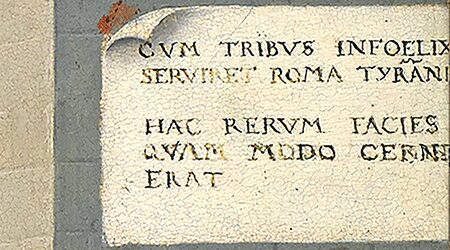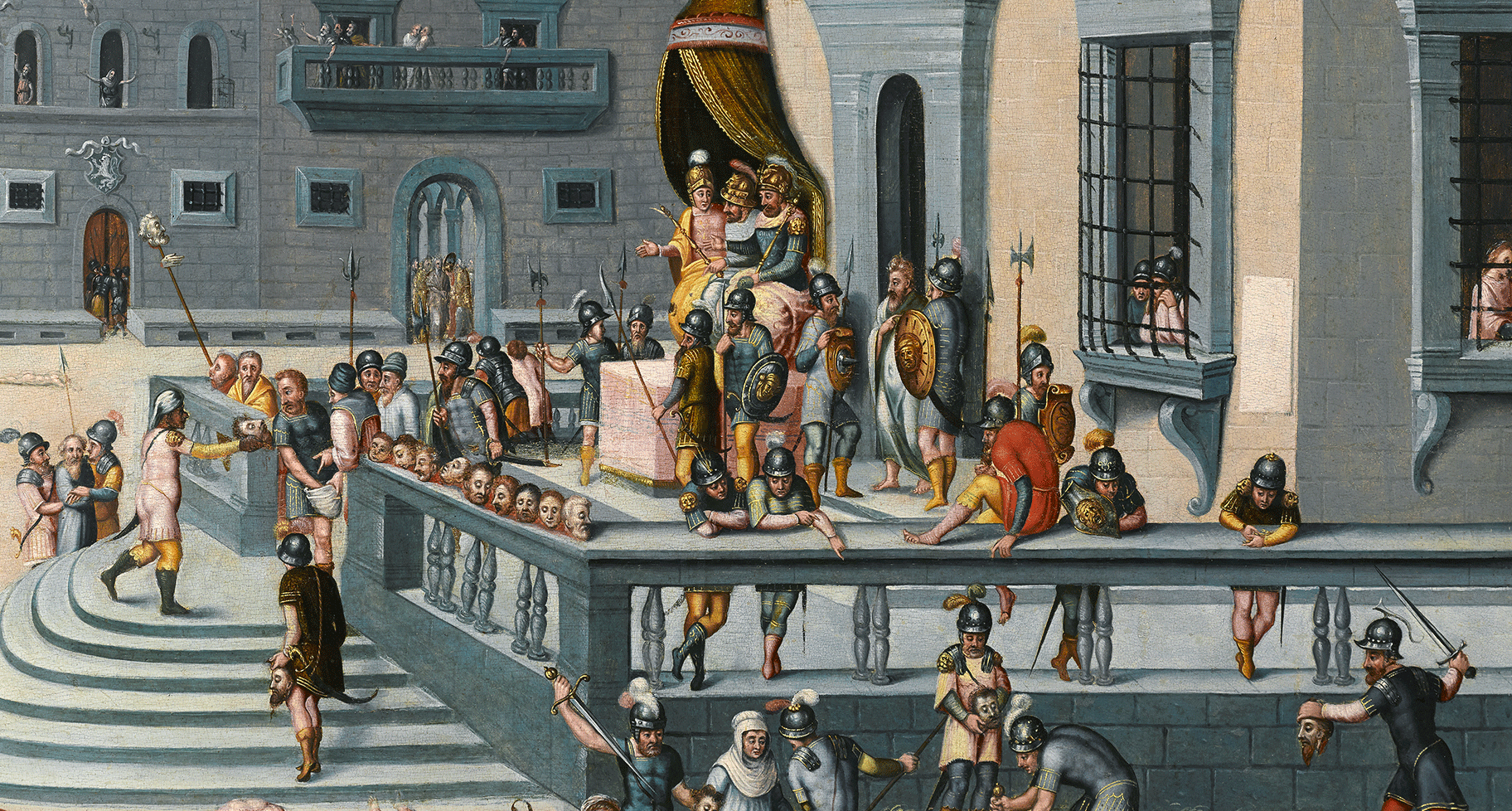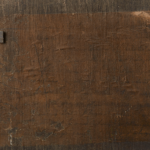The rare surviving works by Antoine Caron, one of the most important French Mannerist painters, depict historical and mythological events and elegant court ceremonies. The unusual subject of the present painting depicts a scene from ancient history: the massacres in Rome in 43 B.C. ordered by the Triumvirate of Octavian, Mark Antony and Lepidus, who are seen enthroned on the right of the picture. The subject was probably drawn from Claude de Seysels Les Guerres des Romains which went through several editions between 1544 and 1560. These paintings were undoubtedly intended as a commentary upon contemporary events, in particular, the savage repression of the French Protestants at the massacre of Vassy (1562) under the Duc de Guise, whose alliance with the Constable de Montmorençy and Jacques d’Albon de Saint-André was also known as the Triumvirate.
The composition relates to Massacres under the Triumvirate (1566) in the Louvre, the only signed and dated painting by Caron, and is known in some twenty different versions, all of them anonymous.
Antoine Caron can be named among the few significant French painters of the epoch of the Wars of Religion (1560–1598). Antoine Caron started his career in Beauvais, his native city, then a relatively important artistic centre, where he painted some religious pictures and designed cartoons for stained-glass windows. Between 1540 and 1550 Caron was active in the workshops at Fontainebleau. Later, he became court painter to Catherine de’ Medici, Queen Regent (1560–1563). Besides Jean Cousin the younger, he was the only French artist from this period with a recognizable artistic personality and was an important witness to the activities of the Valois court during the reigns of Charles IX (1560–1574) and Henry III (1574–1589) and the violent wars between Catholics and Huguenots. Like his royal patrons, Caron was an ardent Roman Catholic; he was connected with the Catholic League and a friend of its poet and pamphleteer, Louis d’Orléans.


















